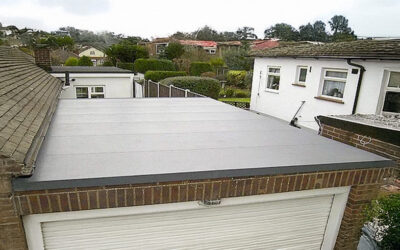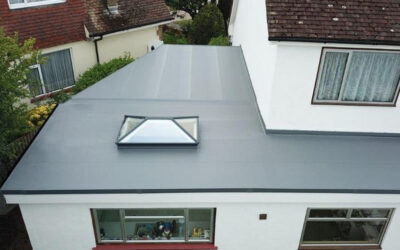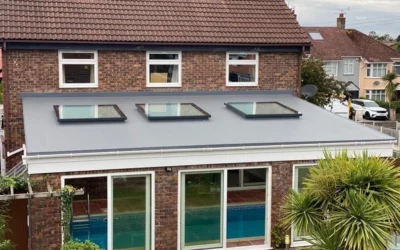Is your flat roof failing? Here’s our 5 tips
Traditionally, domestic flat roofs were predominantly made of asphalt materials. Manufacturing advances during the past decade has given rise to stronger, more durable designs using various types of plastics.
Since the arrival of these new-style designs, flat roofing specialists have been able to virtually eliminate some of the common failures associated with older, asphalt roofs. Single-ply PVC membrane roofing, for example, offers decades of maintenance-free protection from the elements before replacement needs to be considered.
This type of flat roofing has been specially engineered to create a dimensionally stable waterproof covering which is unaffected by expansion and contraction in the way asphalt is.
The materials provide full protection in extreme temperatures, which is why this style of flat roofing is popular the world over from Antarctica to Saudi Arabia. And unlike traditional flat roofs, the membrane is a single-layer installation which reduces the stress on the roof structure as a whole.
If you installed your asphalt flat roof around ten years ago, it is possible that you will begin to experience problems if you haven’t already. While regular maintenance is likely to extend the life of the flat roof in the short-term, eventually you will need to consider replacement.
The following signs indicate that your roof is reaching its expiry date:
Alligatoring: Asphalt loses its elasticity over time and this can cause widespread cracking which resemble an alligator’s skin. It is possible to extend the life of the flat roof by applied a special coating offering UV protection but this needs to happen long before the first cracks emerge.
Roof Seam Failure: Traditional roofs are built with multiple layers and commonly weaknesses are found in the seam areas through aged-related wear and tear. Expansion and contraction also causes the joint areas to separate.
Buckle in membrane: Older-style flat roofs contain a mesh reinforcement soaked with asphalt and as the roof ages, the mesh begins to buckle and deteriorate. This can result in failure over time.
Membrane pull out: When the mesh reinforcement deteriorates, this can cause the roof to contract which has a knock on effect on the stability of the membrane. If the membrane begins to pull away from the flashings, leaks can occur.
No top coating: If the top coat has been blown off during gale force winds, the undercoat and inner layers will be completely exposed, resulting in damage from wind and rain. This is when a homeowner can expect to suffer a leak.
If you notice any of the signs above on your own flat roof, don’t hesitate to call out a flat roof engineer to carry out a maintenance check. Repairs are often possible if the problem is identified early however flat roof owners should be realistic that replacement using modern materials will provide greater peace of mind in the long term.




















